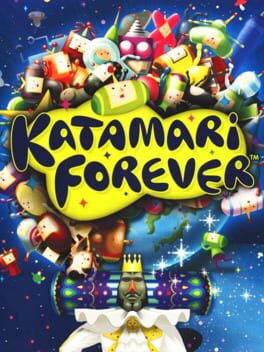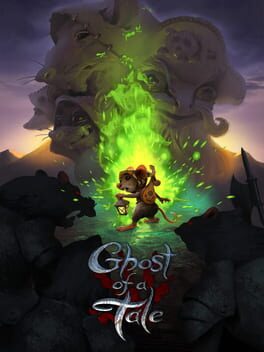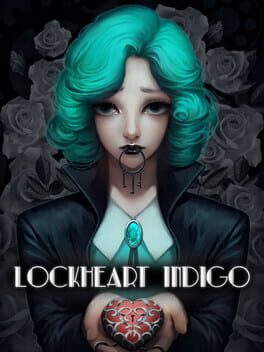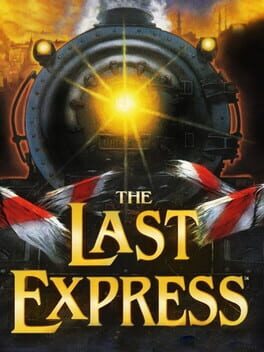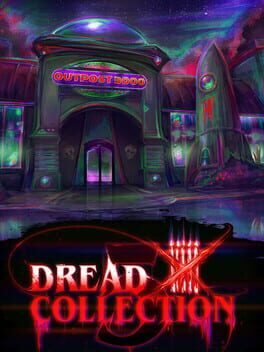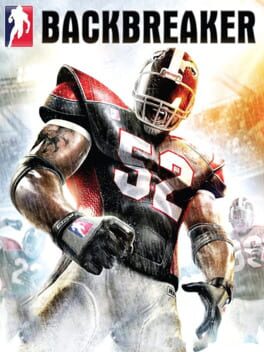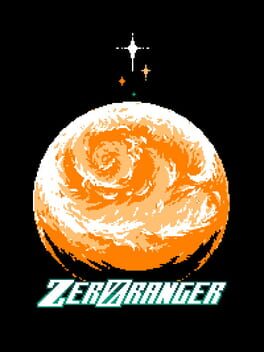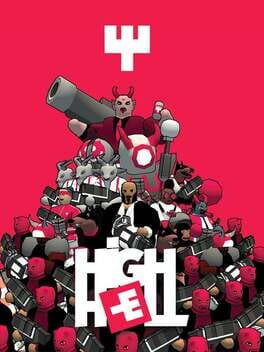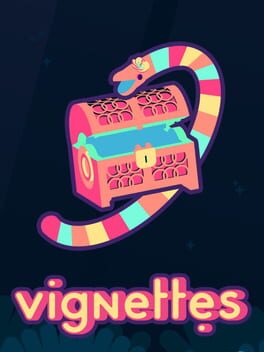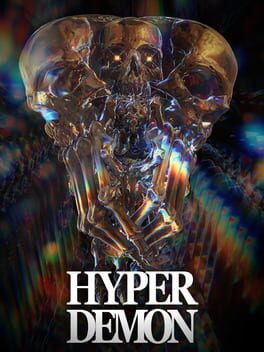Rezlo
BACKER
206 Reviews liked by Rezlo
Katamari Forever
2009
Katamari Forever is one of those games that's so unique and so out there, it has to be experienced, as it's impossible to understand it just from reading about it. I know this because I experienced this first-hand, originally having bought it on the recommendation of a friend, knowing nothing about the series except that it was supposed to be incredible. Even with the game in my hands, reading the back of the box only made me more confused.
The King of All Cosmos bumped his head and lost all his memory. The Prince and his cousins created RoboKing to replace the King, but it went out of control and destroyed all the stars in the Cosmos. Now, you must clean up the mess made by RoboKing and bring back the King's memory by rolling up everything in the Cosmos!
Not that helpful, huh? Most of what it says regards the plot of the game. The King of All Cosmos hit his head while performing a stunt of sorts and fell in a coma. The Prince and company, unable to awake His Majesty, decided the best course of action would be to build a robot that would replace him in his royal duties; however, due to a bug, the robot went berserk, flew into the Cosmos and destroyed the stars. This leaves you, the player, with two tasks: one, rolling up new stars to refill the sky, and two, rolling up memories inside the King's head to restore his consciousness.
Rolling up is the keyword, the one piece of information on that text blurb that relates to the game's mechanics: in every stage, your character is placed on some kind of place from Earth -- a table, a garden, a city -- with a ball in front of them. Any objects touched by it stick to it, so long as they are smaller that what you currently, forming an ever-growing mass of objects that the game calls a Katamari (a word that literally translates to 'cluster'). Your job, as the Prince, is to take a Katamari of a certain starting size and grow it to a certain diameter so it can be flung into space to make a new star in the sky.
There are often special conditions to this that make the trip to Earth more tricky: it could be that there's a time limit, or a limit on the amount of objects that can be rolled up, or a certain type of object that must or must not go into the Katamari. This variety of different challenges combined with ever transforming stages where greater Katamari sizes open up new pathways and interactions, as well as a fantastic soundtrack about as iconic as the game itself, keep the game feeling ever fresh even after rolling dozens of Katamari.
Which is to say, just talking about Katamari Forever makes me want to go for a spin, or rather, for a roll, even though I've completed the game a couple of times on all of its modes. It's fantastic on so many levels, unique in all the things it does, from how it's visuals, to its sound, to how it tells its story, but it's the mesmerizing gameplay that really ties it all together. It seems simple enough at first, and its frantic pacing might make one think they can roll everything and win, but there's a lot of strategy into when and how to visit certain parts of the stage to get a good time.
And I do want to emphasize "mesmerizing": the game creates a bizarre spin on the idea of a power fantasy, turning the "I bet can kill that" thought that's so common in games into "I bet I can roll that". Every slightly larger item is taken as a challenge and made into a mental note, culminating into the amusement of seeing your ever-increasing ball of mayhem grow even larger by trapping household items, bikes, horrified screaming pedestrians, houses and so on. It's that Hotline Miami feeling of behaving like an absolute lunatic, and not even noticing it until the music stops.
It's such a thrill. Katamari Forever is one of my favorite games of all time, and even within its series it shines as one of the largest and most varied entries. I wish Bamco would port it everywhere instead of drip-feeding ports of older releases.
The King of All Cosmos bumped his head and lost all his memory. The Prince and his cousins created RoboKing to replace the King, but it went out of control and destroyed all the stars in the Cosmos. Now, you must clean up the mess made by RoboKing and bring back the King's memory by rolling up everything in the Cosmos!
Not that helpful, huh? Most of what it says regards the plot of the game. The King of All Cosmos hit his head while performing a stunt of sorts and fell in a coma. The Prince and company, unable to awake His Majesty, decided the best course of action would be to build a robot that would replace him in his royal duties; however, due to a bug, the robot went berserk, flew into the Cosmos and destroyed the stars. This leaves you, the player, with two tasks: one, rolling up new stars to refill the sky, and two, rolling up memories inside the King's head to restore his consciousness.
Rolling up is the keyword, the one piece of information on that text blurb that relates to the game's mechanics: in every stage, your character is placed on some kind of place from Earth -- a table, a garden, a city -- with a ball in front of them. Any objects touched by it stick to it, so long as they are smaller that what you currently, forming an ever-growing mass of objects that the game calls a Katamari (a word that literally translates to 'cluster'). Your job, as the Prince, is to take a Katamari of a certain starting size and grow it to a certain diameter so it can be flung into space to make a new star in the sky.
There are often special conditions to this that make the trip to Earth more tricky: it could be that there's a time limit, or a limit on the amount of objects that can be rolled up, or a certain type of object that must or must not go into the Katamari. This variety of different challenges combined with ever transforming stages where greater Katamari sizes open up new pathways and interactions, as well as a fantastic soundtrack about as iconic as the game itself, keep the game feeling ever fresh even after rolling dozens of Katamari.
Which is to say, just talking about Katamari Forever makes me want to go for a spin, or rather, for a roll, even though I've completed the game a couple of times on all of its modes. It's fantastic on so many levels, unique in all the things it does, from how it's visuals, to its sound, to how it tells its story, but it's the mesmerizing gameplay that really ties it all together. It seems simple enough at first, and its frantic pacing might make one think they can roll everything and win, but there's a lot of strategy into when and how to visit certain parts of the stage to get a good time.
And I do want to emphasize "mesmerizing": the game creates a bizarre spin on the idea of a power fantasy, turning the "I bet can kill that" thought that's so common in games into "I bet I can roll that". Every slightly larger item is taken as a challenge and made into a mental note, culminating into the amusement of seeing your ever-increasing ball of mayhem grow even larger by trapping household items, bikes, horrified screaming pedestrians, houses and so on. It's that Hotline Miami feeling of behaving like an absolute lunatic, and not even noticing it until the music stops.
It's such a thrill. Katamari Forever is one of my favorite games of all time, and even within its series it shines as one of the largest and most varied entries. I wish Bamco would port it everywhere instead of drip-feeding ports of older releases.
Outlaws
1997
Red Dead, who? You might ask. Western-themed shooters weren't really a thing, and LucasArts made it their mission to be one of the first. Outlaws was the first of many things trying to break free of the Doom clones using their own Jedi engine known as the INSANE engine. It featured not just horizontal but also vertical aiming, the first shooter with a zoomed scope, and the first shooter to feature a reload mechanic. Outlaws pushed many envelopes in the PC shooter scene and was well received for its great visuals and solid gameplay. It was as fast-paced as any Doom clone and was recognized as such. If you are tired of Doom clones from the mid-to late-90s, Outlaws is a game that sadly passed you by. Outlaws was released on the cusp of new 3D engines like Unreal and Quake. The 2D sprites were welcomed as a breath of fresh air, as were the great art styles.
This was the first PC game I had ever played, back in 1999. My family got their first PC that year, but sadly, we couldn't afford to actually buy any games. My late stepfather and I actually mastered the demo of this game for months. It featured the first two levels, and we wound up beating both of them on Ugly mode at some point, remembering all of the locations of enemies, canteens, ammo, etc. It was indeed a fun time, but we always wanted to know what happened after the second level. To be honest, I dabbled in this game over the years, but it's so hard to get it running right on modern systems. Most of the game is broken, so if you have a retro PC still lying around with Windows 95 or 98, I suggest pulling it out. There are many fixes for the game from the community, so it's mostly bug-free now. This game really needs a remaster or even a remake. Where are you, Nightdive Studios?
The plot in itself is mostly throwaway and uninteresting. You play Clint Eastwood. I mean James Anderson, a retired US Marshal who wants revenge for the kidnapping of his daughter and the murder of his wife. It's a typical Spaghetti Western revenge plot with an evil German doctor, Bandits, and henchmen. There's nothing special or interesting here, but the art is fantastic. You get LucasArts' usual high-quality hand-drawn cut scenes and decent, for the time, voice acting. In total, there are maybe 5 minutes of cut scenes in the entire game. However, that's not the most important part. You're here for the shooting. The music is also fantastic, with the usual Western themes that you hear in movies and other media, but it's still well done.
The shooting is amazing, even to this day. It's fast-paced like Doom and Quake, but there's some strategy needed, which makes the game feel a little more modern. It has both feet on two different thresholds. You need to swap around weapons for different scenarios, such as the (way too many shotguns, by the way) shotgun for small rooms, the pistol for mid-range, and the repeater for long range. It even comes with a scope, as mentioned previously. You also get dynamite to toss around, a minigun that you can only use stationary and is very rare, as well as throwing knives. Stealth isn't really a thing in this game, but it's possible. You rarely run out of ammo, at least on everything but Ugly mode, so shoot away, cowboy!
Enemies are rotating sprites, like in most shooters of the 1990s. They look good and are all unique. There are skinny and fat pistol shooters. Tougher riflemen appear, and then every level has a boss. These guys will appear on the level when you find all the keys (brass, steel, and iron) and are hiding in a final room sometimes as well. This was my biggest gripe with the game. Some of the levels are labyrinthine, such as The Basin, and while there's a Doom-style map that fills as you explore, some of the levels also have keys in weird spots that you will miss easily. Sometimes you need objects to pass through levels as well. The aforementioned Basin level has a bridge that needs to be lowered, but the dark spot next to it blends in too well with the wall, and I needed an actual video guide to realize it was there. A flashing spot would have been nice, or even a giant sign.
I also found the controls pretty poorly set up, so you will have to manually change them. There is no weapon wheel, so you have to slowly scroll through weapons with the mouse wheel or numbers. There is also no quick save, and saving frequently is a must, so you have to constantly go to the pause menu to save. I also found things like alt-fire to be poorly mapped, which is the Z key and not the right mouse button. FPS mapping hadn't quite been standardized yet, so I can't be too harsh on it. Things like jumping and vertical aiming are a nice touch and continue to add to the strategy element of the game, such as aiming down a cliff or ledge. This also adds to the difficulty, as those used to Doom will assume the weapon will automatically shoot at anything not right in front of them.
Outlaws is one of the best retro shooters ever made, despite its flaws. The controls are terrible, the game is a pain to get running, and the story is pretty much pointless, but what is good is what matters most. The shooting. I didn't like how confusing some levels were and how important interactions were easily missed, but these things can be forgiven slightly due to its age and how many things it innovated. Scope zoom, vertical aiming, jumping, great-looking visuals and music, hand-drawn cut scenes, and manual reloading The game is short with only 9 levels, but there were more added for free in Handful of Missions. If you somehow missed out on this classic, then go back and check it out.
This was the first PC game I had ever played, back in 1999. My family got their first PC that year, but sadly, we couldn't afford to actually buy any games. My late stepfather and I actually mastered the demo of this game for months. It featured the first two levels, and we wound up beating both of them on Ugly mode at some point, remembering all of the locations of enemies, canteens, ammo, etc. It was indeed a fun time, but we always wanted to know what happened after the second level. To be honest, I dabbled in this game over the years, but it's so hard to get it running right on modern systems. Most of the game is broken, so if you have a retro PC still lying around with Windows 95 or 98, I suggest pulling it out. There are many fixes for the game from the community, so it's mostly bug-free now. This game really needs a remaster or even a remake. Where are you, Nightdive Studios?
The plot in itself is mostly throwaway and uninteresting. You play Clint Eastwood. I mean James Anderson, a retired US Marshal who wants revenge for the kidnapping of his daughter and the murder of his wife. It's a typical Spaghetti Western revenge plot with an evil German doctor, Bandits, and henchmen. There's nothing special or interesting here, but the art is fantastic. You get LucasArts' usual high-quality hand-drawn cut scenes and decent, for the time, voice acting. In total, there are maybe 5 minutes of cut scenes in the entire game. However, that's not the most important part. You're here for the shooting. The music is also fantastic, with the usual Western themes that you hear in movies and other media, but it's still well done.
The shooting is amazing, even to this day. It's fast-paced like Doom and Quake, but there's some strategy needed, which makes the game feel a little more modern. It has both feet on two different thresholds. You need to swap around weapons for different scenarios, such as the (way too many shotguns, by the way) shotgun for small rooms, the pistol for mid-range, and the repeater for long range. It even comes with a scope, as mentioned previously. You also get dynamite to toss around, a minigun that you can only use stationary and is very rare, as well as throwing knives. Stealth isn't really a thing in this game, but it's possible. You rarely run out of ammo, at least on everything but Ugly mode, so shoot away, cowboy!
Enemies are rotating sprites, like in most shooters of the 1990s. They look good and are all unique. There are skinny and fat pistol shooters. Tougher riflemen appear, and then every level has a boss. These guys will appear on the level when you find all the keys (brass, steel, and iron) and are hiding in a final room sometimes as well. This was my biggest gripe with the game. Some of the levels are labyrinthine, such as The Basin, and while there's a Doom-style map that fills as you explore, some of the levels also have keys in weird spots that you will miss easily. Sometimes you need objects to pass through levels as well. The aforementioned Basin level has a bridge that needs to be lowered, but the dark spot next to it blends in too well with the wall, and I needed an actual video guide to realize it was there. A flashing spot would have been nice, or even a giant sign.
I also found the controls pretty poorly set up, so you will have to manually change them. There is no weapon wheel, so you have to slowly scroll through weapons with the mouse wheel or numbers. There is also no quick save, and saving frequently is a must, so you have to constantly go to the pause menu to save. I also found things like alt-fire to be poorly mapped, which is the Z key and not the right mouse button. FPS mapping hadn't quite been standardized yet, so I can't be too harsh on it. Things like jumping and vertical aiming are a nice touch and continue to add to the strategy element of the game, such as aiming down a cliff or ledge. This also adds to the difficulty, as those used to Doom will assume the weapon will automatically shoot at anything not right in front of them.
Outlaws is one of the best retro shooters ever made, despite its flaws. The controls are terrible, the game is a pain to get running, and the story is pretty much pointless, but what is good is what matters most. The shooting. I didn't like how confusing some levels were and how important interactions were easily missed, but these things can be forgiven slightly due to its age and how many things it innovated. Scope zoom, vertical aiming, jumping, great-looking visuals and music, hand-drawn cut scenes, and manual reloading The game is short with only 9 levels, but there were more added for free in Handful of Missions. If you somehow missed out on this classic, then go back and check it out.
Playmaker
2023
Playmaker blew me away in its level of polish, thoughtfulness, and UI design. I almost don't want to say much about it because part of its appeal is the fun of discovering everything that's possible. At a high-level though, it has six modes: painting, music, stamps, sampler, blocks, and dancing. The painting mode is by far the most robust, containing dozens of paint patterns, stamps, and drawing tools. The music mode has a lot of features too, with multiple instruments and the ability to play up to four notes at a time spanning the whole treble clef staff. The other modes are smaller toy boxes in comparison, but the blocks are equally fun as painting especially if you prefer having more constraints.
The most impressive part about Playmaker is how the controls and UI design blend together to create a really intuitive experience. It may take some getting used to at first, but the pause menu has a nice cheat sheet if you ever get lost. The sound design is top notch too, and the game has several tools in it that I didn't believe were possible on Playdate without huge performance hits (i.e. smudge tool and bucket fill). Even if you aren't the most creative person or have no desire to create full art assets or music with Playmaker, the process of discovery is fun and entertaining by itself.
The most impressive part about Playmaker is how the controls and UI design blend together to create a really intuitive experience. It may take some getting used to at first, but the pause menu has a nice cheat sheet if you ever get lost. The sound design is top notch too, and the game has several tools in it that I didn't believe were possible on Playdate without huge performance hits (i.e. smudge tool and bucket fill). Even if you aren't the most creative person or have no desire to create full art assets or music with Playmaker, the process of discovery is fun and entertaining by itself.
Spellcorked!
2022
Tuve dificultades para parar de jugar a este juego, porque además de contar con una atención al detalle y una belleza visual sin comparación en Playdate, es el juego que emplea la mayor cantidad de funciones de la consola al mismo tiempo. Cada nuevo ingrediente o poción a preparar es una sorpresa en sí misma, no tanto por la función que cumplen en la (completamente ignorable) historia como por la forma que tienen de interactuar contigo. De esta forma, el juego te incita a sentir curiosidad por lo que puedas hacer si empiezas a trastear un poco con el rígido orden establecido por la narración. Creo que, en manos de un sistema de juego más abierto, Spellcorked! podría convertirse fácilmente en uno de los títulos más originales de Playdate.
------------------------------------------------
I had a hard time when I tried to stop playing this, because in addition to its lavish visual style that is unmatched with anything that's on Playdate right now, it's the one game that employs most of its features. Each new ingredient or potion is a mystery to be solved, not so much for the function they serve in the (completely ignorable) story as for the way they interact with you. The game rapidly encourages you to be curious about tinkering with your components, and forget about the rigid progressión that the narrative wants you to follow. I think that, with a more open game space, Spellcorked! could easily become Playdate's most original title.
------------------------------------------------
I had a hard time when I tried to stop playing this, because in addition to its lavish visual style that is unmatched with anything that's on Playdate right now, it's the one game that employs most of its features. Each new ingredient or potion is a mystery to be solved, not so much for the function they serve in the (completely ignorable) story as for the way they interact with you. The game rapidly encourages you to be curious about tinkering with your components, and forget about the rigid progressión that the narrative wants you to follow. I think that, with a more open game space, Spellcorked! could easily become Playdate's most original title.
Ghost of a Tale
2018
This made me realise I should probably start checking out more games I haven't heard of on PS+ Extra because this game only caught my eye when it was leaving the service and the description had me intrigued. Ghost of a Tale is a pretty interesting game that is trying to do a lot with what seems like a low budget. It's refreshing to play an RPG that takes place in a small world and has very little to no combat. You'll be mostly sneaking by enemies although I wouldn't say the stealth mechanics are particularly developed. The focus is more on finding parts of costumes through exploration or quests which allow you to blend in, or cause less noise or run faster. I was quite surprised to find myself quite invested in the characters too. With the main character being a bard, I wish they did something a bit more substantial with the songs other than picking one from a list and listening to an instrumental version. The zero voice acting was an obvious problem there. It's a cool little game that I would like to see what the developers do next, especially with a bit more budget.
Lockheart Indigo
2020
When people try to imitate noir, they often lean too much in the wrong direction. What direction that is depends from story to story. Sometimes they center too much on the private detective aspect, forgetting that noir is more than just a gritty mystery drama. Its complex factions, con games, tense rivalries, ambiguous moralities. Sometimes it goes too deep on the gritty tone and doesn't think to have fun with the crime and mystery aspects. But more often than not, its a private detective in a hat solving a mystery and monologing. Sometimes I'm alright with that being the genre parody we get. Its good fun.
I think what impressed me about Lockheart Indigo is, for all its goofy 8-bit aesthetics, it hits such a nice noir tone. Beatris, the cyan 1960s detective, is explicitly disinterested in finding justice. She's a woman with a sick sister and bills to pay. She's here for money first. When shit goes sideways, her interest doesn't shift to heroism, it shifts to survival. Getting paid is crucial, getting the killer is crucial, but her central focus is providing for herself. While characters try to demean her for it and its certainly portrayed as a flaw, the narrative understands noir enough that its not a flaw she's going to be able to grow past. Its just how she has to live.
Pairing her with the far more self-obsessed Volkov family adds for a good contrast. Its an immediate nest of vipers, rich assholes climbing over each other to cling to their fortune. The gameplay involves straight-forward interrogations. Butter them up, chip at their ego, whatever tactic suits their personality. The different egoisms or anxieties of the cast make for good variety and help establish how easy it is for them to turn on each other to build their own fortune. It helps make the noir tone land. If you find the killer, what's left? The survivors will keep fighting and killing and striking at each other because its the only tools they understand. They can pretend to take a moral high ground against Beatris' own self-interest, but she can't match a candle to their own cycle of destruction. Beatris' "victory" earns her a 10k paycheck, 50k less than she was promised, and the survivors just have to stew in their mutual hatred. No one's happy. Its noir, baby.
The other key factor of the game is just how stylish it is. Locating colorful keys to match colorful keys to encounter color-coded characters to see colorful interrogation graphics. Its a stunning effort for a free rpg maker game. You gotta admire it.
Solving a sidequest unlocks a strange little post-game segment. The game lightly touches on the Volkov family backstory and the various times the family has circled the same patterns of murder. You get to walk around the manor of the early 1910s, observing just how similar the previous generations of the family acted to the modern ones. Still gossiping, still sniping, still letting jealousy rumble beneath the surface. It doesn't add much to the main plot of the game, but its just kind of a charming way to add more layers. To just demonstrate how constantly the family falls into these patterns. Its just good narrative hooks. I like to see it unravel. And a cozy little indie rpg is all I need for that sometimes.
I think what impressed me about Lockheart Indigo is, for all its goofy 8-bit aesthetics, it hits such a nice noir tone. Beatris, the cyan 1960s detective, is explicitly disinterested in finding justice. She's a woman with a sick sister and bills to pay. She's here for money first. When shit goes sideways, her interest doesn't shift to heroism, it shifts to survival. Getting paid is crucial, getting the killer is crucial, but her central focus is providing for herself. While characters try to demean her for it and its certainly portrayed as a flaw, the narrative understands noir enough that its not a flaw she's going to be able to grow past. Its just how she has to live.
Pairing her with the far more self-obsessed Volkov family adds for a good contrast. Its an immediate nest of vipers, rich assholes climbing over each other to cling to their fortune. The gameplay involves straight-forward interrogations. Butter them up, chip at their ego, whatever tactic suits their personality. The different egoisms or anxieties of the cast make for good variety and help establish how easy it is for them to turn on each other to build their own fortune. It helps make the noir tone land. If you find the killer, what's left? The survivors will keep fighting and killing and striking at each other because its the only tools they understand. They can pretend to take a moral high ground against Beatris' own self-interest, but she can't match a candle to their own cycle of destruction. Beatris' "victory" earns her a 10k paycheck, 50k less than she was promised, and the survivors just have to stew in their mutual hatred. No one's happy. Its noir, baby.
The other key factor of the game is just how stylish it is. Locating colorful keys to match colorful keys to encounter color-coded characters to see colorful interrogation graphics. Its a stunning effort for a free rpg maker game. You gotta admire it.
Solving a sidequest unlocks a strange little post-game segment. The game lightly touches on the Volkov family backstory and the various times the family has circled the same patterns of murder. You get to walk around the manor of the early 1910s, observing just how similar the previous generations of the family acted to the modern ones. Still gossiping, still sniping, still letting jealousy rumble beneath the surface. It doesn't add much to the main plot of the game, but its just kind of a charming way to add more layers. To just demonstrate how constantly the family falls into these patterns. Its just good narrative hooks. I like to see it unravel. And a cozy little indie rpg is all I need for that sometimes.
Firework
2021
Firework is a Chinese supernatural mystery game where you play as Lixan, a rookie police detective that has the ability to communicate with the dead. On the case to find the source of a burning coffin, the mystery quickly spirals into a horrific tragedy of a family at the brink of ruin and what their spirits left behind. The core story is interesting, and feels well-paced for the 3 hour runtime. There are hints to other subplots and backstories which aren't as fleshed out as they could be, and end up muddying the tale in confusing ways. Firework is mainly a point and click adventure game, where you dart from a limited set of rooms and spaces picking up clues to progress. The game overall is extremely linear and there is no exploration or optional objectives. This is a core narrative experience, and that isn't a negative. I liked my time with this game and think it's worth a few dollars if you're a fan of mysteries and maybe a creepy moment or two.
The Last Express
1997
I love train media and I love historical fiction. The plot is very fun to follow and lord do you have no idea how the end of this game plays out trust me. The only thing knocking it down for me is really how ahead of its time it is. The game plays out in real time with characters having different conversations and actions predetermined that means that often you have very little to do for long periods of time or tons to do in a short amount of time. It's extremely inventive but needs a fast forward in addition to the rewind as well as a better "chapter" skip option. This is mostly because there are so many ways to fail and getting back to where you need to be can sometimes be very tedious. The narrative and sound design are great though I really want to find like a whole playthrough w/o commentary and use as an audiobook or white noise.
Dread X Collection 5
2022
i feel totally confident in saying this is my favorite collection in the Dread X series, simply put there was no game i didnt enjoy! while there are games that shine more than others all of them still have their qualities and charm.
Hub - i feel a bit mixed about this games hub, while i do really enjoy the theme of a chuck-e-cheese style building and thought the puzzles and moments were fun, i think it was a bit too linear for my liking, they didnt let you choose what areas to explore or what puzzles to complete, instead they just unlock when the game wants them to, still tho i liked this hub a lot and the comic is a welcome feature that adds a bit more reward to beating the games.
The Book of blood - by far my favorite game of the collection, everything about this game was fun, intriguing and awesome, creepy ambiance, great puzzles altough a bit confusing, and amazing setting, this is definetly a project i would love to see become a full game
Gallerie - probably my second pick for favorite game, the setting for this game is creepy, bizarre and awesome, and it had so many mechanics that i thought were really interesting, all topped off with an amazing story, was also very surprise by how long an complete this game was, it truly felt like a complete experience which is amazing
We Never Left - super cool idea, i really enjoyed the text adventure gameplay and the story this game built, this one also had some really good scares and atmosphere, total congrats to the dev
Karao - this game can be a bit hard and a bit frustrating with its checkpoints, but still i thought the ambiance was great, the gun gameplay is fun and the story was awesome
Beyond The Curtain - short and sweet, while it didnt have much going on in it, this game still had a great setting and positively uncomfortable mood
Ludomalica - really great idea done well, definetly the game that brought the most scares and in really great ways
Rotten Stigma - while not the best game in the collection, it was still very enjoyable and brought alot of good to the table, the ambiance was unnerving and great, the scares were nothing special but still this game had a great setting and style
Spirit Guardian - i loved the audio related mechanics for this game, and it brought some really tense and scary moments, the visual style was also really nice and while a few of the parts could be annoying it was still mostly a great experience from beggining to end
Visage - really great idea with a great execution, this one was definetly a contender for scariest game and the story and the way it was told was amazing
Resver - im gonna be honest, this game was confusing, weird, and i didnt really understand what it was, but i still kinda loved it lol, the visual style was super unique and great and overall it was just a fun weird ride
Hunsvotti - really weird game but i loved it, the setting is not super scary but still pretty unique and unnerving in its own way and the ending was the best, overall good time
Interim - in my opinion the weakest game in the collection, while still not bad it definetly needed a bit of polish, the physics puzzles werent great and i didnt really understand what was going on, but still a pretty alright experience
so as you can see while not masterpieces all the way, there really isnt a game in the Dread X Collection 5 that i can call bad, all of the games have their own charm and i feel alot of them could be amazing if they were fully fledged experiences, i can confidently say this is my favorite game in the Dread X series.
Hub - i feel a bit mixed about this games hub, while i do really enjoy the theme of a chuck-e-cheese style building and thought the puzzles and moments were fun, i think it was a bit too linear for my liking, they didnt let you choose what areas to explore or what puzzles to complete, instead they just unlock when the game wants them to, still tho i liked this hub a lot and the comic is a welcome feature that adds a bit more reward to beating the games.
The Book of blood - by far my favorite game of the collection, everything about this game was fun, intriguing and awesome, creepy ambiance, great puzzles altough a bit confusing, and amazing setting, this is definetly a project i would love to see become a full game
Gallerie - probably my second pick for favorite game, the setting for this game is creepy, bizarre and awesome, and it had so many mechanics that i thought were really interesting, all topped off with an amazing story, was also very surprise by how long an complete this game was, it truly felt like a complete experience which is amazing
We Never Left - super cool idea, i really enjoyed the text adventure gameplay and the story this game built, this one also had some really good scares and atmosphere, total congrats to the dev
Karao - this game can be a bit hard and a bit frustrating with its checkpoints, but still i thought the ambiance was great, the gun gameplay is fun and the story was awesome
Beyond The Curtain - short and sweet, while it didnt have much going on in it, this game still had a great setting and positively uncomfortable mood
Ludomalica - really great idea done well, definetly the game that brought the most scares and in really great ways
Rotten Stigma - while not the best game in the collection, it was still very enjoyable and brought alot of good to the table, the ambiance was unnerving and great, the scares were nothing special but still this game had a great setting and style
Spirit Guardian - i loved the audio related mechanics for this game, and it brought some really tense and scary moments, the visual style was also really nice and while a few of the parts could be annoying it was still mostly a great experience from beggining to end
Visage - really great idea with a great execution, this one was definetly a contender for scariest game and the story and the way it was told was amazing
Resver - im gonna be honest, this game was confusing, weird, and i didnt really understand what it was, but i still kinda loved it lol, the visual style was super unique and great and overall it was just a fun weird ride
Hunsvotti - really weird game but i loved it, the setting is not super scary but still pretty unique and unnerving in its own way and the ending was the best, overall good time
Interim - in my opinion the weakest game in the collection, while still not bad it definetly needed a bit of polish, the physics puzzles werent great and i didnt really understand what was going on, but still a pretty alright experience
so as you can see while not masterpieces all the way, there really isnt a game in the Dread X Collection 5 that i can call bad, all of the games have their own charm and i feel alot of them could be amazing if they were fully fledged experiences, i can confidently say this is my favorite game in the Dread X series.
Backbreaker
2009
Backbreaker Football is a unique American football simulation game plagued by a lot of issues. It boasts a physics engine that throws canned tackle animations out of the window in favor of a physics system that makes no two tackles or animations the same.
On the field, Backbreaker's gameplay is messy. When controlling a receiver or defender, the camera switches to an over-the-shoulder view that obstructs your vision and makes it difficult to see incoming players. It makes the game feel more immersive, but results in a lot of frustrating play calls. Controls also feel very weighty and clunky; coupled with the obstructive camera, Backbreaker is often challenging to play.
Modes are pretty standard. Season mode allows for custom leagues, but lacks basic options like player trades and signing free agents. Road to Backbreaker, the Franchise Mode, plays as you expect as you take control of a low-rated team and develop your team into an all-star squad throughout a season.
The two best parts about Backbreaker are the team customization and the Tackle Alley mini-game. While Backbreaker is unlicensed and does not have real NFL players or teams, the game has a very detailed logo creator that allows players to create teams of interest along with the ability to name players. Quite cool to see people have created a full-on NFL League within Backbreaker. Tackle Alley (originally an iOS mobile game) is a 100 level wave-based arcade-like mini-game where you try to score from deep in your own territory all the way to the end-zone down field. Early waves are easy with few defenders, while higher waves get more challenging with more defenders, obstacles and out of bounds areas.
Backbreaker was truly something different and ahead of it's time. It's unfortunate that the game never lived up to its full potential and lacked a lot of features compared to EA and 2K's sports titles.
On the field, Backbreaker's gameplay is messy. When controlling a receiver or defender, the camera switches to an over-the-shoulder view that obstructs your vision and makes it difficult to see incoming players. It makes the game feel more immersive, but results in a lot of frustrating play calls. Controls also feel very weighty and clunky; coupled with the obstructive camera, Backbreaker is often challenging to play.
Modes are pretty standard. Season mode allows for custom leagues, but lacks basic options like player trades and signing free agents. Road to Backbreaker, the Franchise Mode, plays as you expect as you take control of a low-rated team and develop your team into an all-star squad throughout a season.
The two best parts about Backbreaker are the team customization and the Tackle Alley mini-game. While Backbreaker is unlicensed and does not have real NFL players or teams, the game has a very detailed logo creator that allows players to create teams of interest along with the ability to name players. Quite cool to see people have created a full-on NFL League within Backbreaker. Tackle Alley (originally an iOS mobile game) is a 100 level wave-based arcade-like mini-game where you try to score from deep in your own territory all the way to the end-zone down field. Early waves are easy with few defenders, while higher waves get more challenging with more defenders, obstacles and out of bounds areas.
Backbreaker was truly something different and ahead of it's time. It's unfortunate that the game never lived up to its full potential and lacked a lot of features compared to EA and 2K's sports titles.
ZeroRanger
2018
This game is absolutely awesome. Zeroranger has shown me how to appreciate shmups, a genre I've been sleeping on. When you're playing ZeroRanger, the fun engine is always on full throttle. Riding along with you is a truly fantastic soundtrack which does such a great job of hyping you up. This game and soundtrack feel meant for each other. Anytime I listen to tracks from this game (which is often!) I get a desire to hop into ZeroRanger and start blasting. The ost is incredible in isolation andeven better when you're hearing it in-game
I love the player's movement speed, perfect for the fast pace of the game, perfect for the challenges the stages throw at you. The way you move and attack fits well for a game where the bullets flying towards you are challenging more due to their speed than density
I love the arsenals of weapons. ZR gives you a lot of tools to deal with enemy positions that would be frustrating in other games. It's also interesting that one of your weapons encourages aggression in such a bold way... i love having access to such a high skill tool that I can and will misuse.
There's not many stages, but they're all great. They do an excellent job with their pacing, and have a great variety in what they throw at you. Quite a few of the fun stage gimicks wouldn't work without the specific weapons this game is designed around.
The bosses are surprisingly dynamic and interesting to fight. For a game about surviving what's on screen, there's a surprising amount of depth to your aggression.
The visuals are also very cool. I adore how ZeroRanger commits to only using a green & orange color palette. Everything is entirely readable in the heat of the moment, and it looks nice too.
There's one glaring flaw and it's the final challenge. It's bullshit, absurdly punishing and frustrating. After failing it for the fourth time I have very little desire to touch this game ever again. That's a real shame, because ZeroRanger deserves to be a game I frequently return to.
I love the player's movement speed, perfect for the fast pace of the game, perfect for the challenges the stages throw at you. The way you move and attack fits well for a game where the bullets flying towards you are challenging more due to their speed than density
I love the arsenals of weapons. ZR gives you a lot of tools to deal with enemy positions that would be frustrating in other games. It's also interesting that one of your weapons encourages aggression in such a bold way... i love having access to such a high skill tool that I can and will misuse.
There's not many stages, but they're all great. They do an excellent job with their pacing, and have a great variety in what they throw at you. Quite a few of the fun stage gimicks wouldn't work without the specific weapons this game is designed around.
The bosses are surprisingly dynamic and interesting to fight. For a game about surviving what's on screen, there's a surprising amount of depth to your aggression.
The visuals are also very cool. I adore how ZeroRanger commits to only using a green & orange color palette. Everything is entirely readable in the heat of the moment, and it looks nice too.
There's one glaring flaw and it's the final challenge. It's bullshit, absurdly punishing and frustrating. After failing it for the fourth time I have very little desire to touch this game ever again. That's a real shame, because ZeroRanger deserves to be a game I frequently return to.
High Hell
2017
I feel the raw creativity pouring into every square inch of this experience, and I live for that shit. It's so densely packed with moments of hilarious ingenuity. The loading screens alone are worth the price of admission, but I had a great time with the missions, the achievements, and exploring the delightful verticality of each level. The kick/gunplay feels good; fueled by the excellent sound design, it taps right into that little peanut of violence lurking at the center of my brain. The boss fights maybe not so much, but I respect the effort.
I see a lot of folks complaining about the price-to-content ratio - I say this calculus is warped. This is a unique piece of artwork, a visceral creative expression only made possible through hundreds of hours of raw labor. Many folks gladly pay $15 to see a 2-hour movie that will be forgotten in a week - for me, this was far more thrilling and memorable. Perhaps storefronts should provide some up-front info about expected playtime, but to call $10 an unfair price for any piece of art demonstrates a lack of respect for the work it takes to create great experiences. Spare indie games from this consumerist entitlement.
I see a lot of folks complaining about the price-to-content ratio - I say this calculus is warped. This is a unique piece of artwork, a visceral creative expression only made possible through hundreds of hours of raw labor. Many folks gladly pay $15 to see a 2-hour movie that will be forgotten in a week - for me, this was far more thrilling and memorable. Perhaps storefronts should provide some up-front info about expected playtime, but to call $10 an unfair price for any piece of art demonstrates a lack of respect for the work it takes to create great experiences. Spare indie games from this consumerist entitlement.
Vignettes
2017
Brilliant puzzle game in which you juggle with different objects to change their point of view and transform them into other objects, creating a large interconnected map of visual associations. It reminded me in some respects of Gnog, which came out the same year, in the sense that they are both games that put a lot of focus on physicality, having real objects such as puzzle boxes or other toys as references; compared to Gnog, however, Vignettes seemed to me much more varied and fun, with a good amount of secrets and creative intuitions that made the experience very engaging and enjoyable. I really love games like this, which go back to a very genuine and deep-rooted conception of play that has to do with developing creativity, lateral thinking, and messing around with reality in an interactive and explorative way.
Hypnospace Outlaw
2019
Funny, smart, but most of all, kind. A whole world and cast of characters presented through nostalgic web 1.0, with layers and layers to peel back as you peer deeper and deeper into the web and into people's lives - some sad, some comedic, some nefarious. Somehow in this massive world with its immense amounts of well produced content and media is an immensely satisfying puzzle experience, and on top of that is an excellent narrative that really examines and empathizes with the colorful people in this world. I put this next to Obra Dinn and Outer Wilds - experiences I will remember forever.
Hyper Demon
2022
unreal horrific imagery, astoundingly ingenious game design, watertight perfectly crafted punishing gunplay, absurdly high skill ceiling, helped with an accessible and inviting tutorial and a fantastic ranking system that makes it instantly addictive to want to grow and get better at the game....
i would go on more about the way this game is designed - from the 4d 360 degree proximity warnings that flash on your screen, to the way enemies move and behave in a way that is contingent with everything else in the game, to sound cues and movement tricks and metas and tricks that can be learned with frequent play - but ill be honest, im not good at talking about that shit. the game design here is too complicatedly crafted for me to explain, but trust me this game is absolutely perfect when it comes to killing you fairly and killing you often.
from just a technical standpoint this is absolutely everything i want in a fps game mechanically speaking. while there's no story or real function of the game beyond "shoot the fuck out of everything as fast as possible", it doesnt need it at all.
and no theres no way in hell im beating this i could not even beat devil daggers these games are way too hard for me.
i would go on more about the way this game is designed - from the 4d 360 degree proximity warnings that flash on your screen, to the way enemies move and behave in a way that is contingent with everything else in the game, to sound cues and movement tricks and metas and tricks that can be learned with frequent play - but ill be honest, im not good at talking about that shit. the game design here is too complicatedly crafted for me to explain, but trust me this game is absolutely perfect when it comes to killing you fairly and killing you often.
from just a technical standpoint this is absolutely everything i want in a fps game mechanically speaking. while there's no story or real function of the game beyond "shoot the fuck out of everything as fast as possible", it doesnt need it at all.
and no theres no way in hell im beating this i could not even beat devil daggers these games are way too hard for me.
